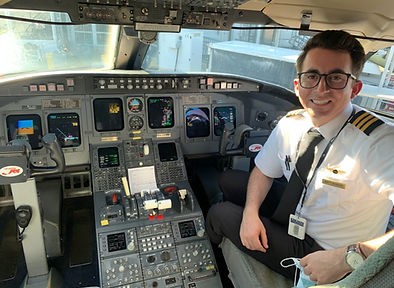Commercial Pilot Certificate

A commercial pilot can receive compensation for being the pilot of an aircraft. Commercial pilot employment opportunities include a wide variety of flight operations including corporate flying, traffic reporting, law enforcement, crop dusting, charter operations, flight instruction, pipeline patrol, flying cargo, firefighting, banner towing, fish spotting, aircraft testing, sightseeing flights, and more.
To become a commercial pilot you must first hold a private pilot certificate. An instrument rating is also required for the commercial pilot certificate to be issued without restrictions.
Commercial pilot applicants receive flight and ground training from a CFI preparing them for the written and practical exams. Areas of operation include takeoffs & landings including a power-off 180 degree accuracy approach and landing, performance maneuvers, eights on pylons, ground reference maneuvers, accelerated stalls, and other requirements.
When you have completed your training you will take the commercial pilot practical exam with a FAA Designated Examiner.

Requirements
Commercial Pilot Age - 18
Commercial Flight Training - 20
Total Flight Time - 250
Solo Flight Time - 10
Night Flight Time - 5
Written Exam - Yes
FAA Check-Ride - Yes
-
100 hours of pilot-in-command time, 50 of which must be in airplanes.
-
50 hours of cross-country time, 10 of which must be in an airplane.
-
20 hours of training, including 10 of instrument, 10 of complex or TAA, and a smattering of cross-country and practical test preparation.
-
10 hours of solo training, including a smattering of cross-country and night.